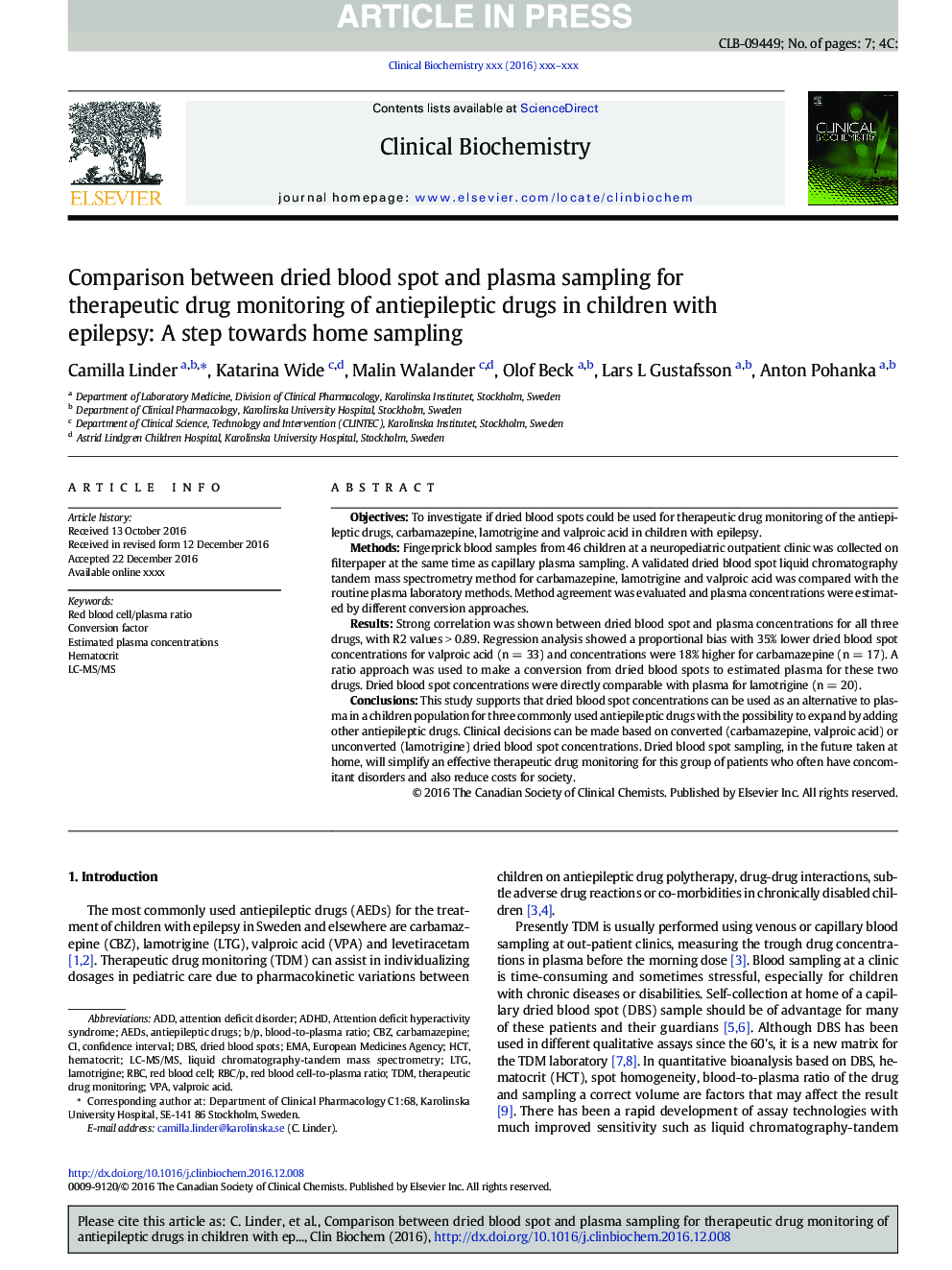| Article ID | Journal | Published Year | Pages | File Type |
|---|---|---|---|---|
| 5510012 | Clinical Biochemistry | 2017 | 7 Pages |
Abstract
This study supports that dried blood spot concentrations can be used as an alternative to plasma in a children population for three commonly used antiepileptic drugs with the possibility to expand by adding other antiepileptic drugs. Clinical decisions can be made based on converted (carbamazepine, valproic acid) or unconverted (lamotrigine) dried blood spot concentrations. Dried blood spot sampling, in the future taken at home, will simplify an effective therapeutic drug monitoring for this group of patients who often have concomitant disorders and also reduce costs for society.
Keywords
DBSAEDsLTGRBCHCTEMAVPATDMB/PCbzLC-MS/MSEuropean Medicines agencyAttention deficit disorderADDADHDconversion factorantiepileptic drugsLiquid chromatography-tandem mass spectrometryconfidence intervalLamotriginedried blood spotsblood-to-plasma ratiotherapeutic drug monitoringhematocritValproic acidcarbamazepinered blood cell
Related Topics
Life Sciences
Biochemistry, Genetics and Molecular Biology
Biochemistry
Authors
Camilla Linder, Katarina Wide, Malin Walander, Olof Beck, Lars L Gustafsson, Anton Pohanka,
